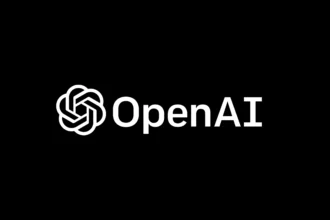Is OpenAI.com Secure? A Deep Dive into Its Safety Measures
In our ever-evolving digital world, security is more than just a buzzword; it’s a lifeline. Whether you’re sending a quick email or utilizing advanced AI technology, apprehensions about data security lurk in the back of everyone’s mind. You may be pondering one pressing question: Is OpenAI.com secure? To unpack this, let’s scrutinize the security measures in place at OpenAI, its compliance with relevant regulations, and the integrity of its system.
Table of Contents
ToggleUnderstanding OpenAI’s Commitment to Security
Before diving headfirst into the specifics of OpenAI’s security, let’s paint a broader picture of what security means in the world of AI. In essence, security encompasses the measures taken to protect data against unauthorized access, theft, and destruction. For an organization like OpenAI, which deals with massive amounts of data processing via APIs, ensuring a robust security framework is paramount.
OpenAI has made substantial strides in securing its platform. Not only has it invested in advanced security protocols, but it has also embraced industry standards that prioritize user safety. This commitment can be seen in its adherence to various security frameworks and compliance standards, which we’ll explore next.
Regulatory Compliance: GDPR and CCPA
Two of the most significant regulations governing data privacy and protection today are the General Data Protection Regulation (GDPR) and the California Consumer Privacy Act (CCPA). These regulations ensure that organizations take the necessary steps to protect user data and maintain privacy. Lucky for us, OpenAI’s operational framework adheres to both of these regulations.
By complying with GDPR, OpenAI demonstrates its commitment to protecting the personal data of individuals in the European Union. This regulation mandates stringent data management practices and emphasizes user rights regarding their data. On the other hand, compliance with CCPA reinforces OpenAI’s dedication to upholding consumer rights, giving users more control over their personal information and how it’s used.
This double compliance not only underscores OpenAI’s proactive approach toward security but also offers peace of mind to users. When you interact with OpenAI, especially if you handle sensitive data, knowing that they follow these regulations can significantly ease your concerns.
Data Processing Agreements: A Layer of Security
For organizations that require a bespoke approach to data security, OpenAI can execute a Data Processing Agreement (DPA). You might wonder: what exactly is a DPA? It’s a legally binding contract that defines the scope, nature, and purpose of processing personal data. Essentially, it outlines responsibilities and clarifies expectations between OpenAI and your organization regarding data handling.
This is particularly crucial for businesses that may be subject to stricter compliance protocols or unique data protection requirements. With a tailored DPA, organizations can establish additional safeguards, ensuring that their sensitive information receives the utmost protection during processing. This layer of customization empowers users to engage with OpenAI confidently, knowing there’s a legal framework that prioritizes data security.
Third-Party Security Audits: Assurance of Compliance
One of the most impactful ways to assess a company’s security is through third-party audits. OpenAI has undergone rigorous evaluations by an independent security auditor, resulting in SOC 2 Type 2 compliance. Now, let’s break that down: SOC stands for Service Organization Control.
SOC 2 Type 2 is an auditing process that evaluates an organization’s information security measures over a period of time—typically a minimum of six months. The audit assesses the functionality of service controls to determine if the organization upholds its promised security standards. In simpler terms, when you see that OpenAI is SOC 2 Type 2 compliant, it’s like receiving a stamp of approval from an impartial party that scrutinized their security procedures extensively.
This level of scrutiny not only reflects OpenAI’s unwavering dedication to security but also serves as reassurances for users that their data is being managed in a secure environment. The implications are enormous; organizations can be more inclined to entrust sensitive operations to an API that has passed stringent security evaluations.
Implementing Best Practices: OpenAI’s Ongoing Security Measures
It’s essential to acknowledge that security isn’t a checkbox event; it’s an ongoing process. OpenAI continuously evolves its security practices to align with the latest industry standards and technological advancements. Here are some of the best practices in place:
- Encryption: Data is encrypted both in transit and at rest. This means information is scrambled so that even if someone intercepts it, they won’t easily decipher it.
- Access Controls: Only authorized personnel have access to sensitive data. Implementing strict access controls minimizes risk by ensuring that not everyone can access data indiscriminately.
- Regular Security Assessments: OpenAI conducts frequent internal and external security assessments to identify and fix potential vulnerabilities before they’re exploited.
- Awareness Training: Employees undergo regular training on security-conscious behaviors to mitigate risks posed by human error.
Examining User Interactions with OpenAI
An often-overlooked aspect of security revolves around user interactions with platforms like OpenAI. While the organization takes significant precautions, the security mindset extends beyond what a single entity can control. Users, too, play a crucial role in maintaining a secure environment.
Users should be aware of their practices when utilizing AI technologies. That means keeping sensitive information to a minimum, being cautious about the data you input, and employing robust security measures on your devices—like using strong, unique passwords and enabling two-factor authentication. While OpenAI implements significant measures to secure its platform, collaboration between the organization and its users creates a more fortified security stance.
The Bigger Picture: Security in AI Development
As we grapple with the growing use of artificial intelligence, security concerns are becoming even more prevalent. AI technology is inherently complex and can operate in unpredictable ways. Therefore, the integrity of security measures must stay one step ahead of the evolving landscape of threats.
OpenAI emphasizes not just on securing its platform but also on conducting responsible AI development. By understanding the ethical implications of AI, OpenAI is actively building systems that don’t inadvertently perpetuate or magnify existing biases or vulnerabilities. It’s a multi-dimensional approach to security that encompasses technology, ethics, and trust.
Embracing Transparency and Accountability
Transparency fosters trust, especially when it comes to data handling. OpenAI adheres to this principle by being open about its data usage policies and security practices. The transparency in processes can help users evaluate how their data will be utilized and empower them to make proactive decisions regarding their privacy.
In a time where data breaches and security issues are desensitizing us to the potential dangers, OpenAI is taking the necessary steps to be a beacon of security and transparency. By openly demonstrating its commitment to safeguarding user data, OpenAI placates mounting concerns and invites users to partake in a secure experience.
In Conclusion: The Verdict on OpenAI’s Security
So, is OpenAI.com secure? Based on a thorough analysis, the answer appears to be a resounding yes. With compliance to GDPR and CCPA regulations, bespoke Data Processing Agreements, SOC 2 Type 2 certification from third-party auditors, and best practices in place, users can interact with OpenAI’s services confidently.
However, it’s essential to remember that security is a collective responsibility. Users must engage with the platform judiciously while remaining informed about potential vulnerabilities. The integration of individual responsibility with OpenAI’s robust security framework creates the ultimate secure environment. So go ahead! Engage with OpenAI’s innovations, knowing you’re part of a secure, responsible journey into the future of AI.


